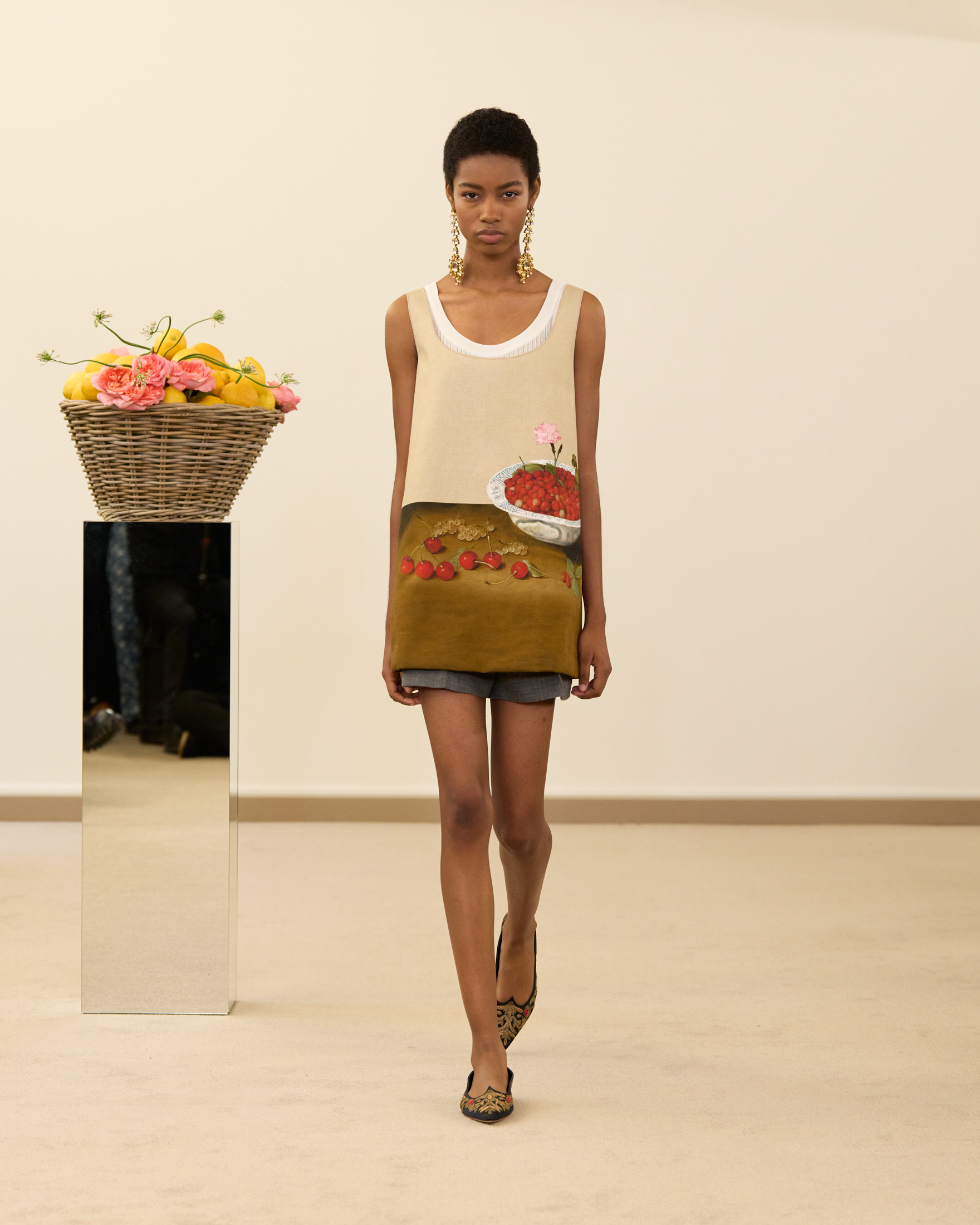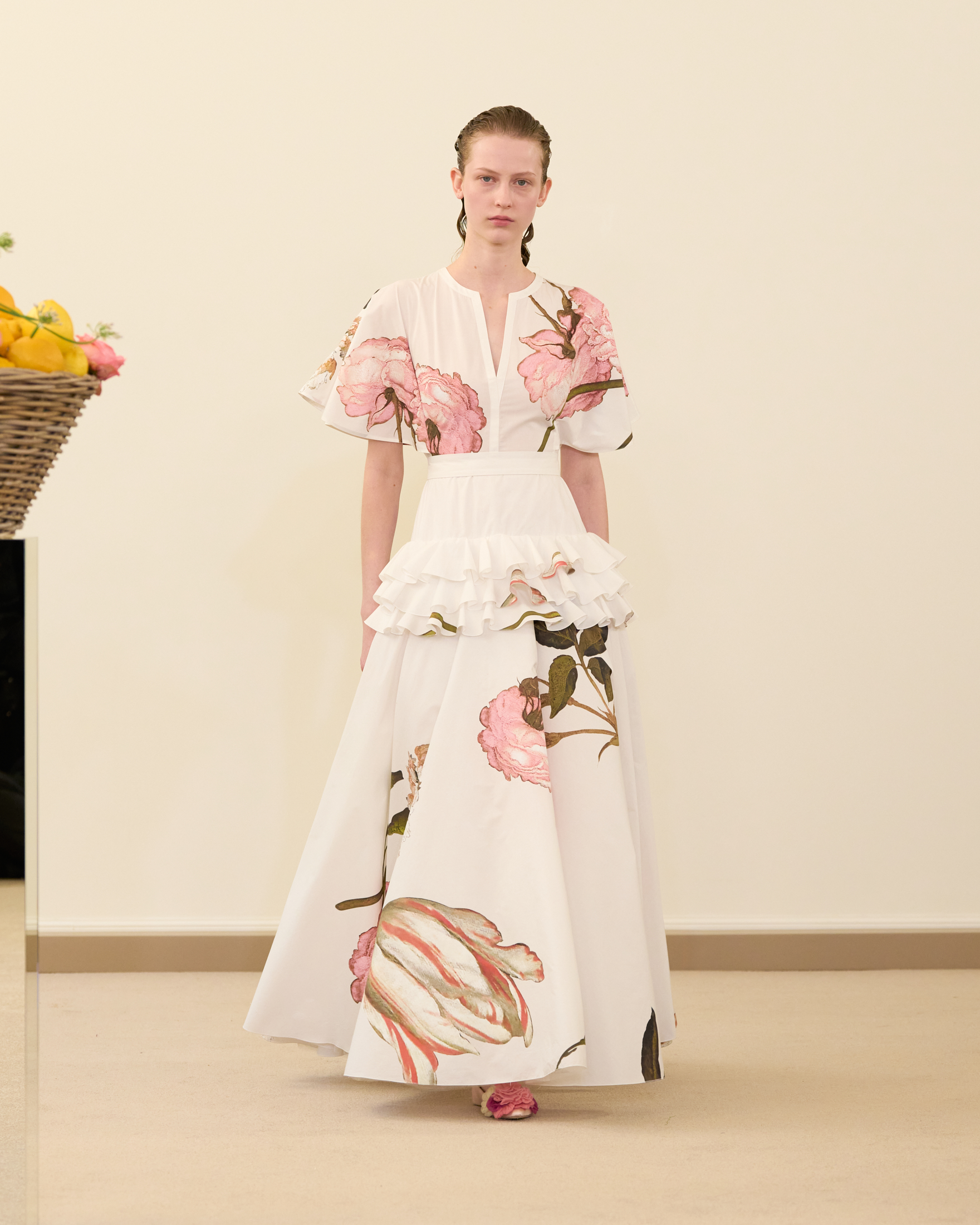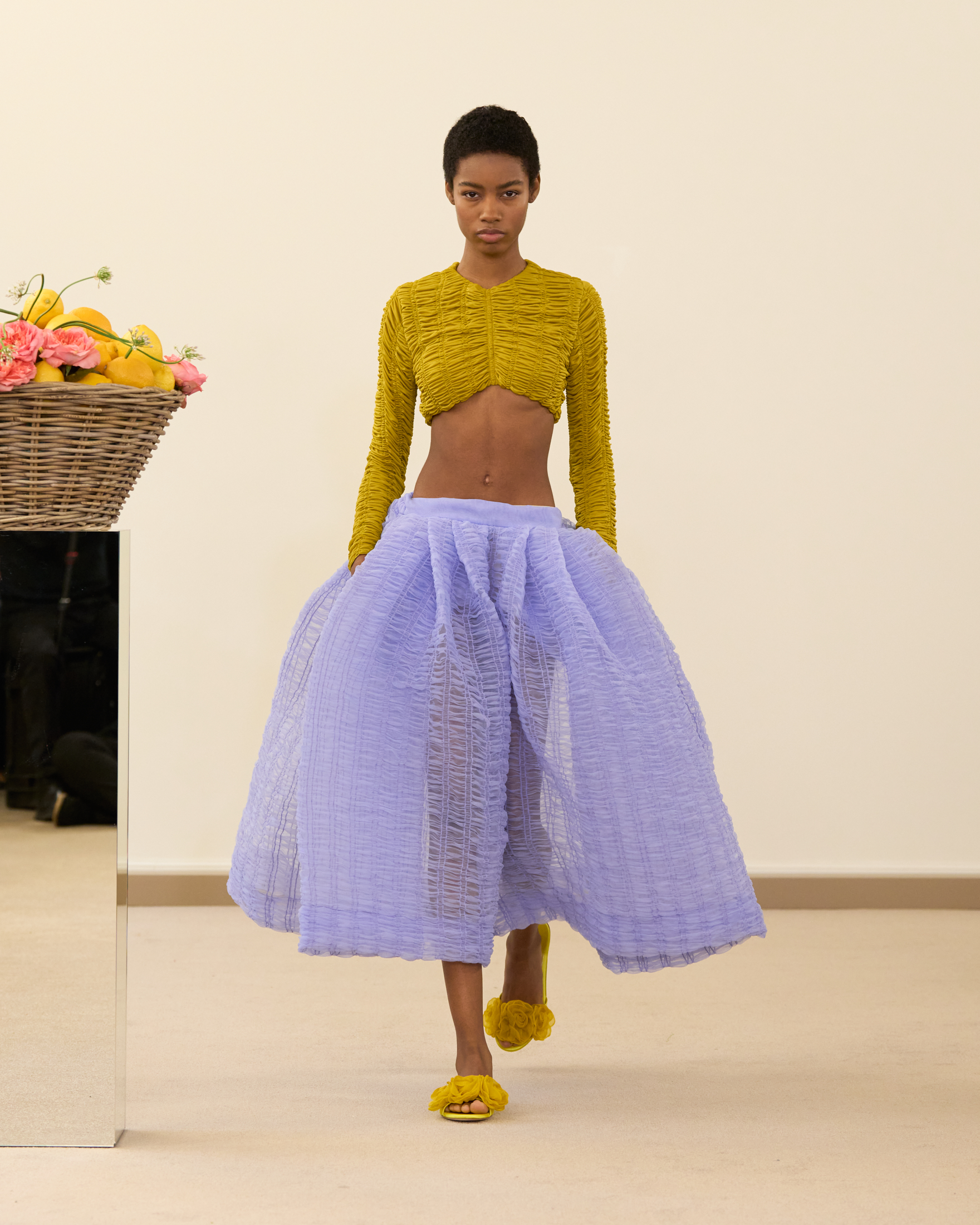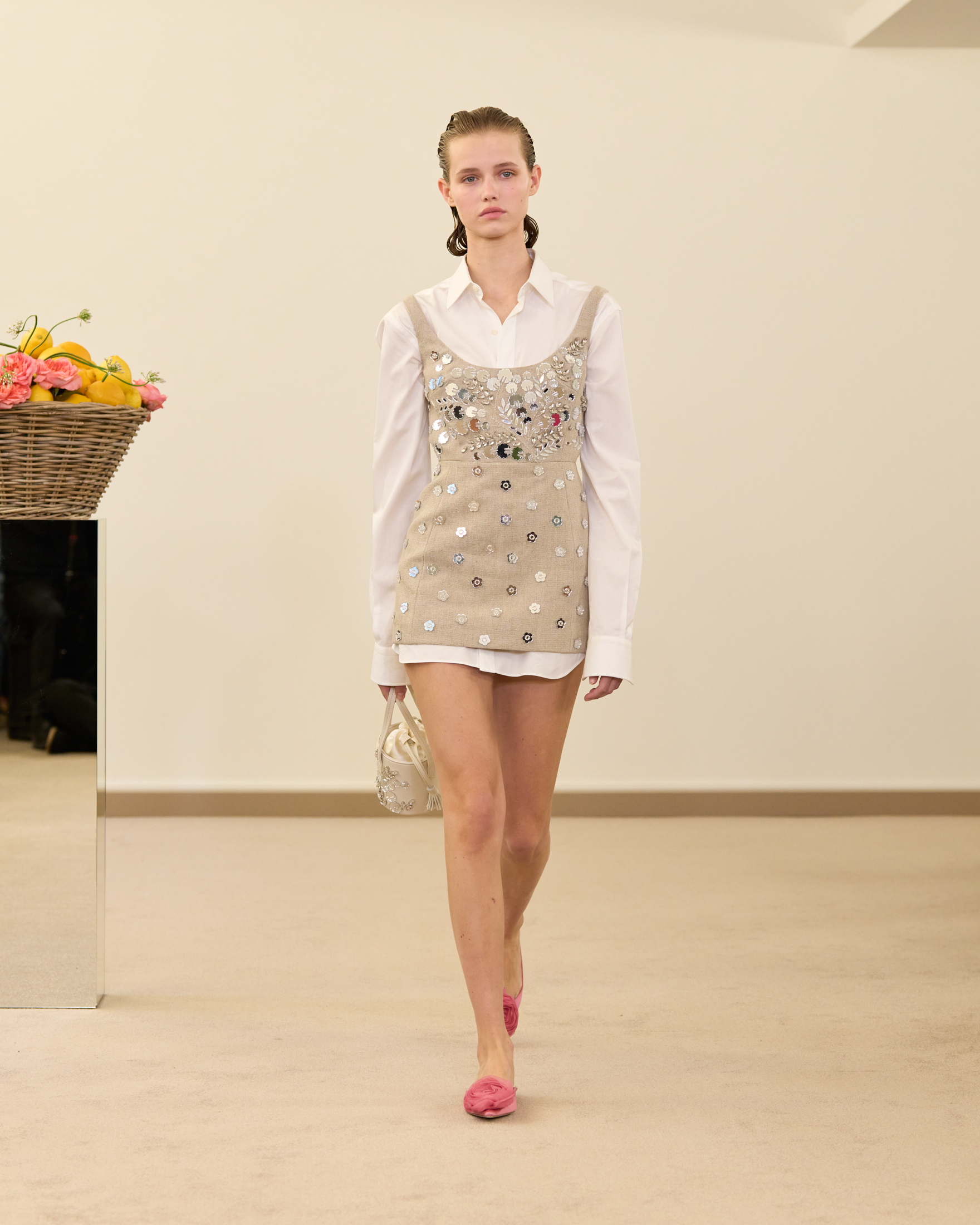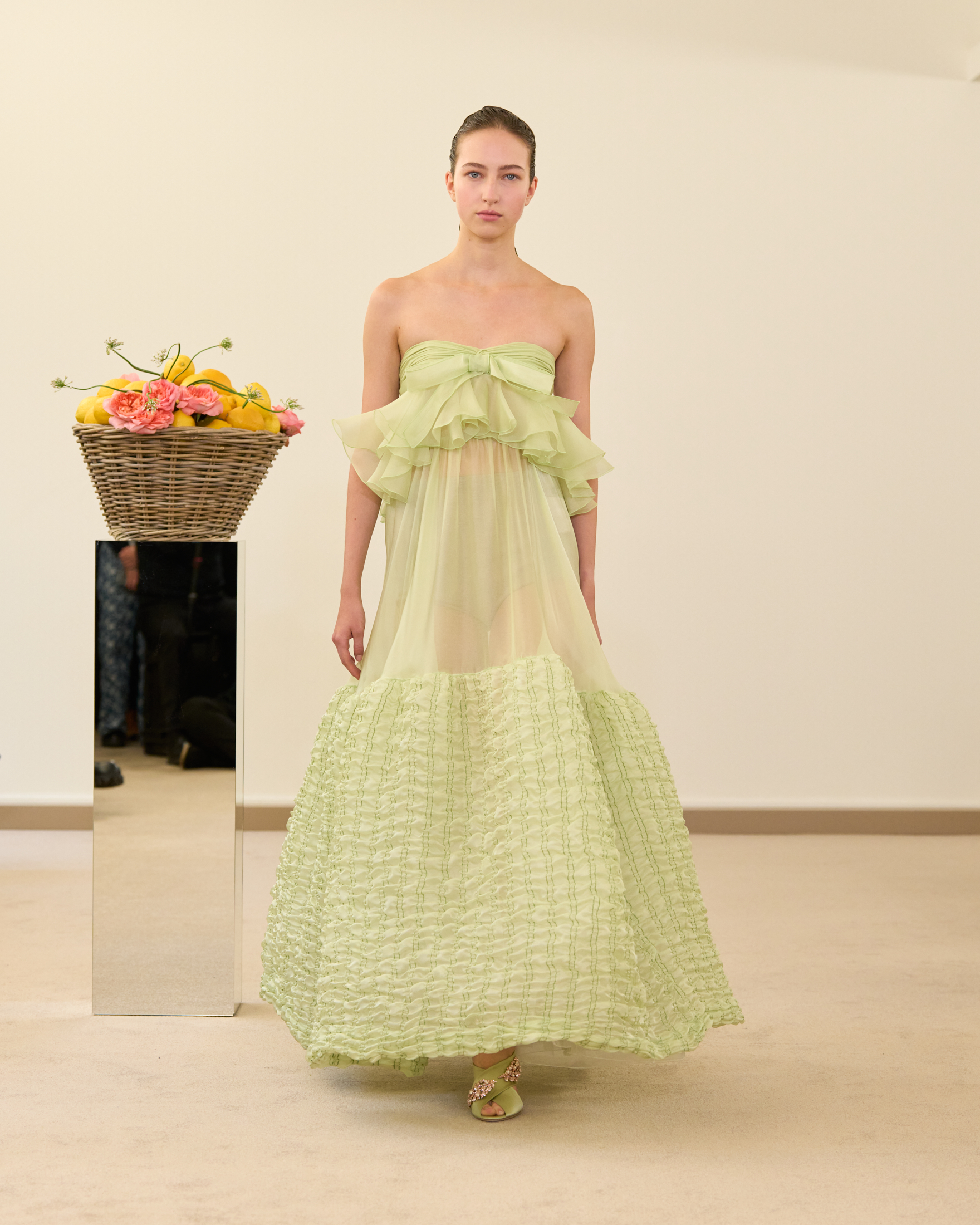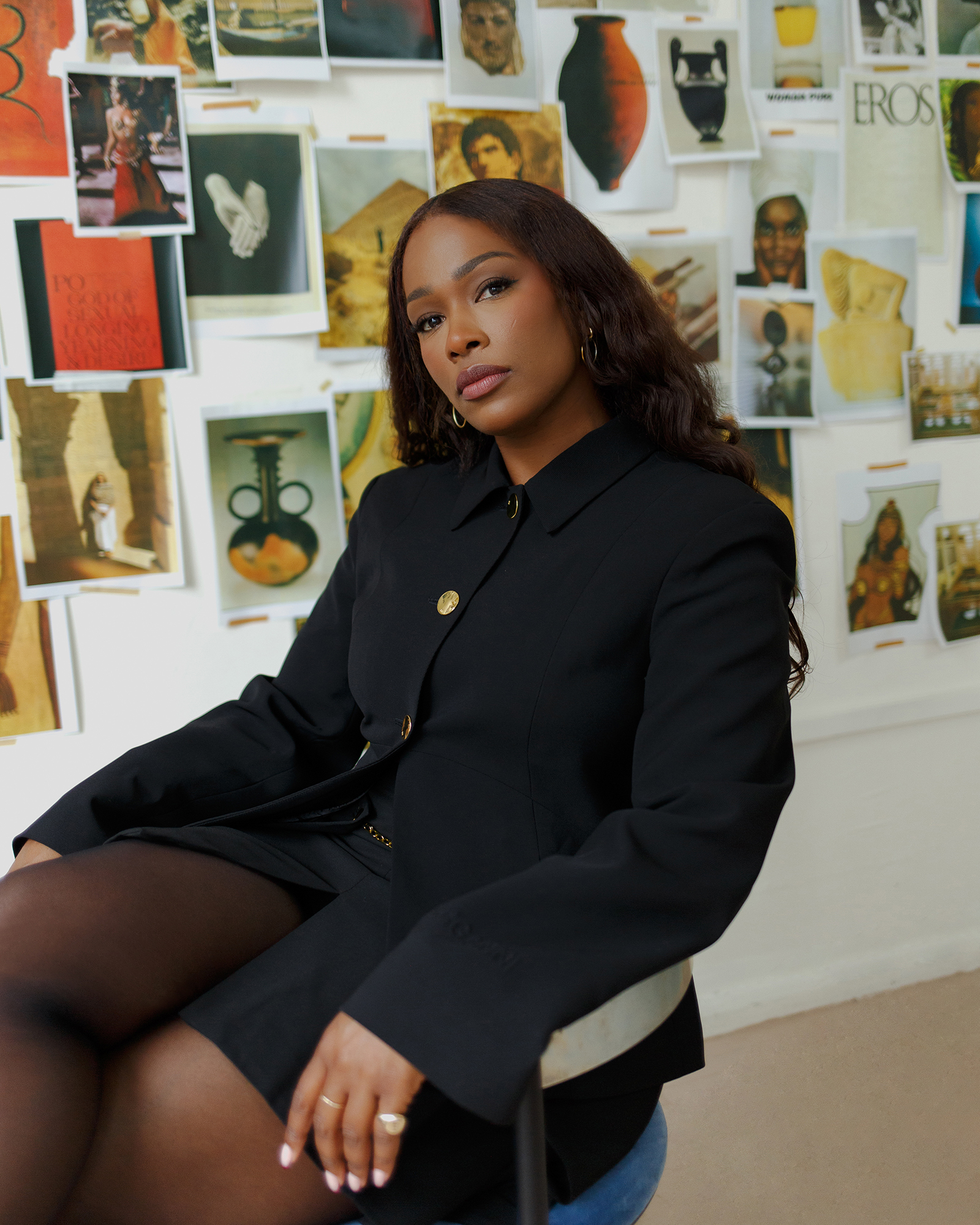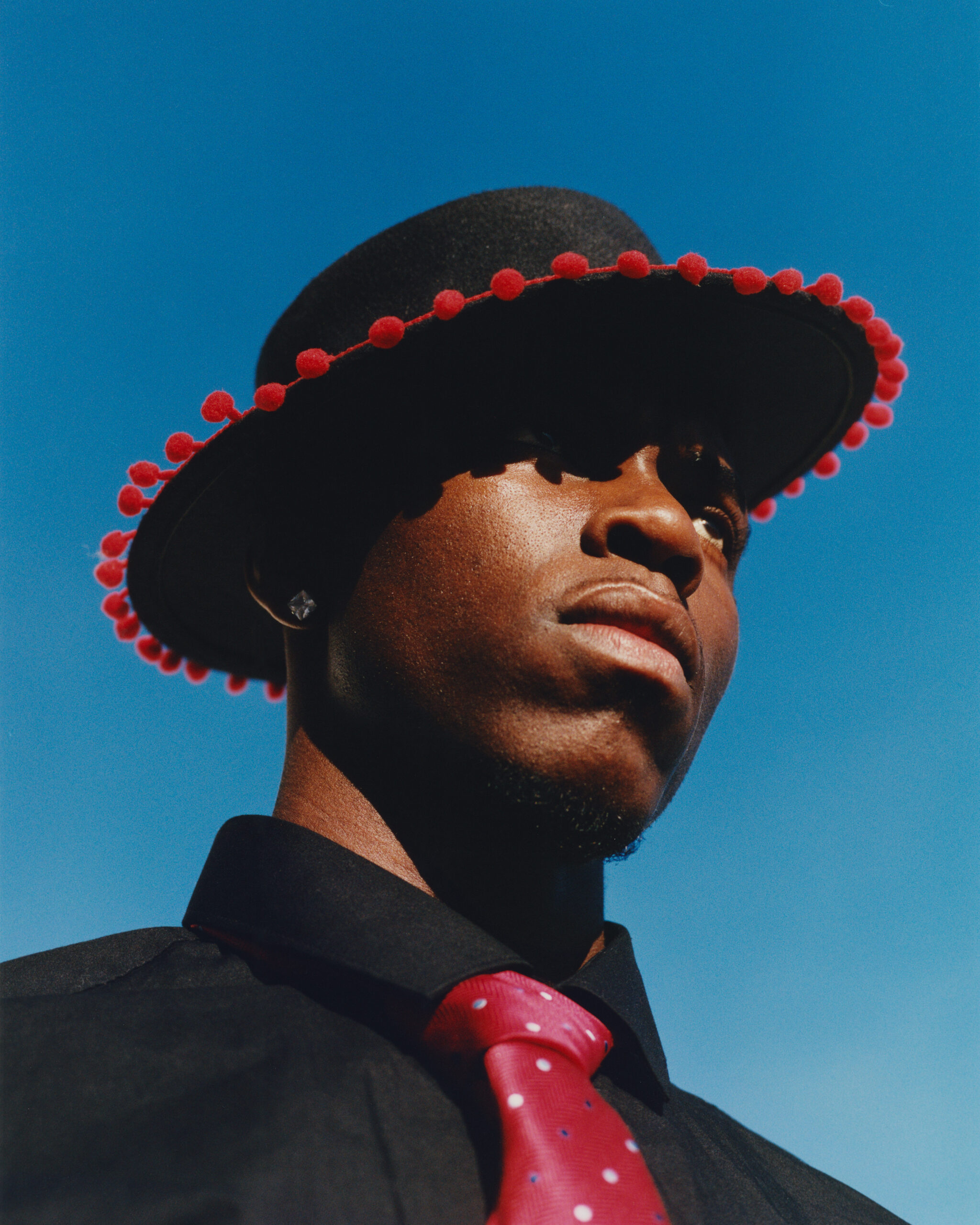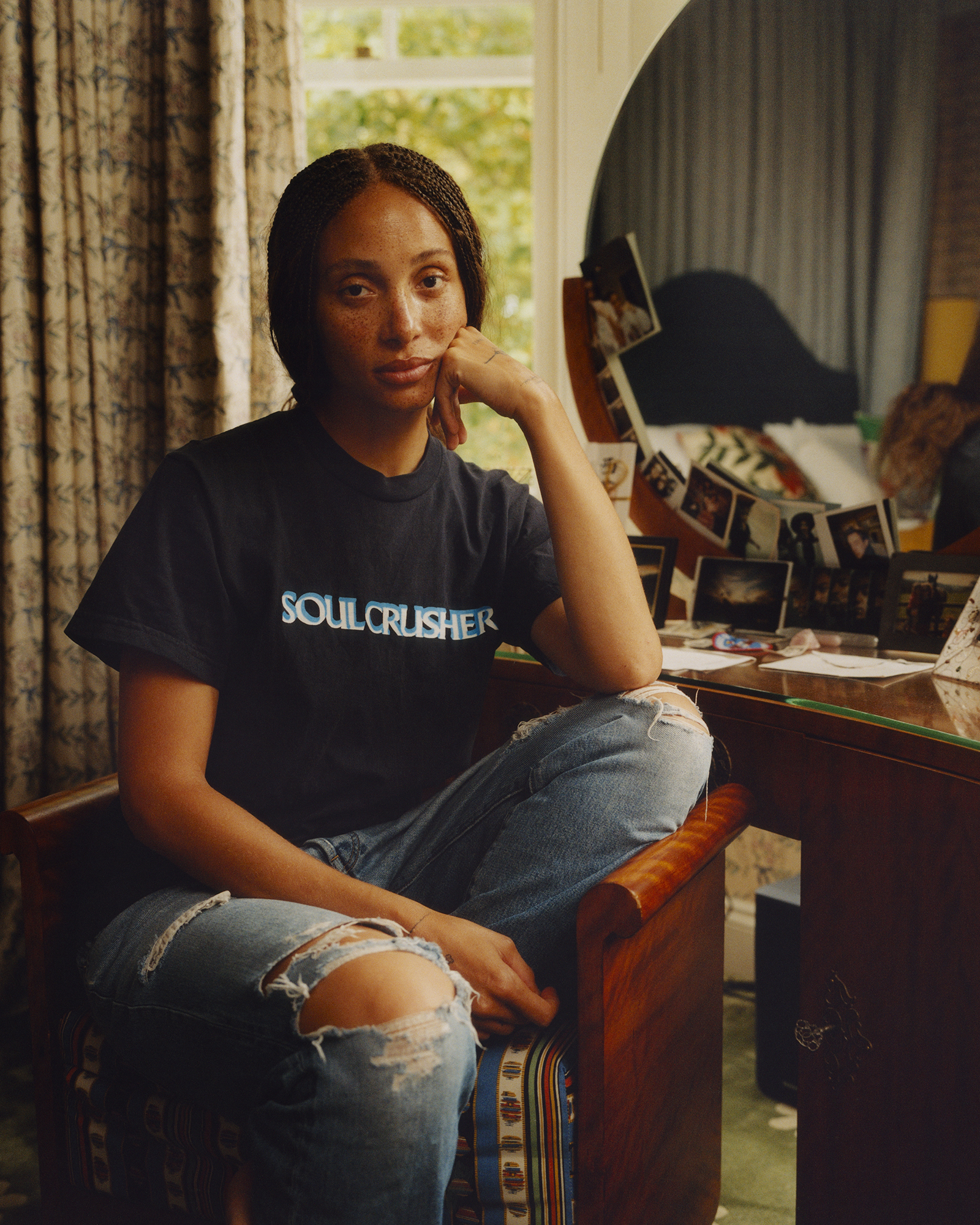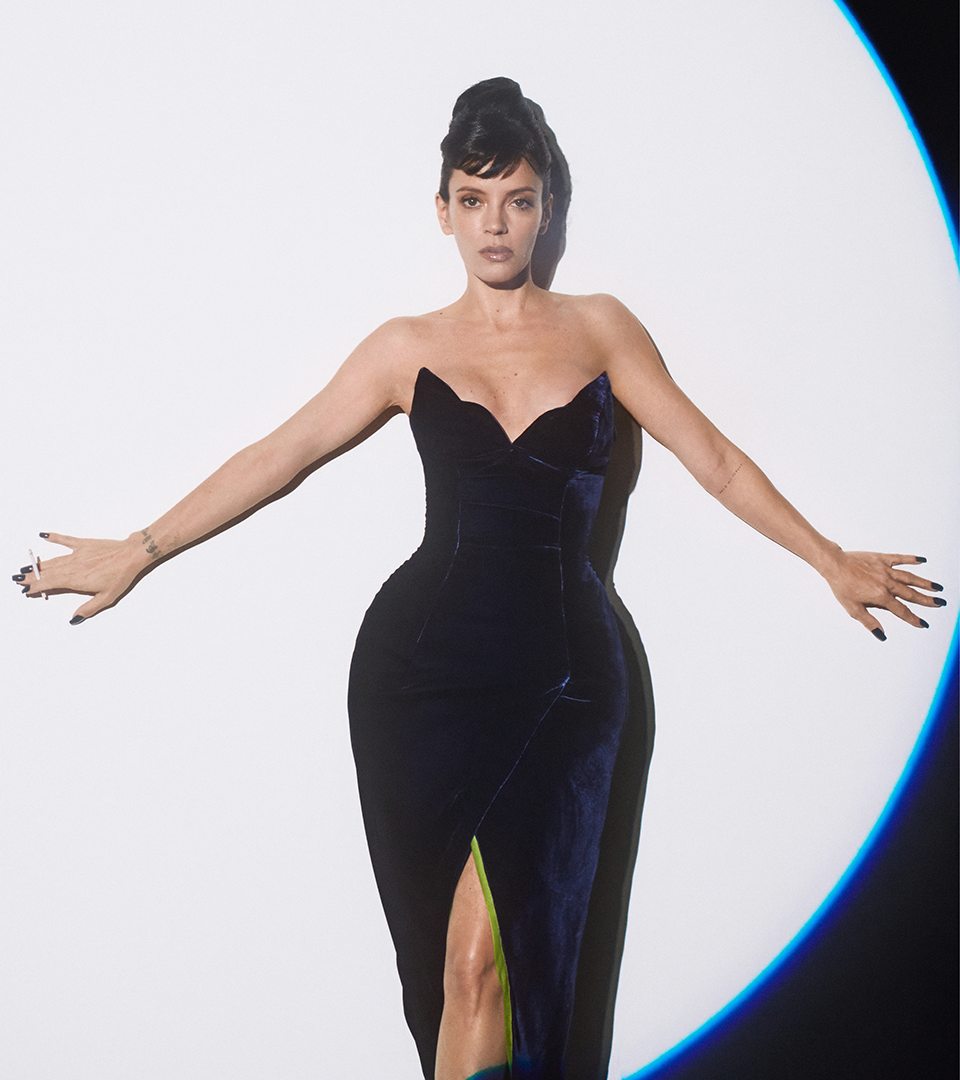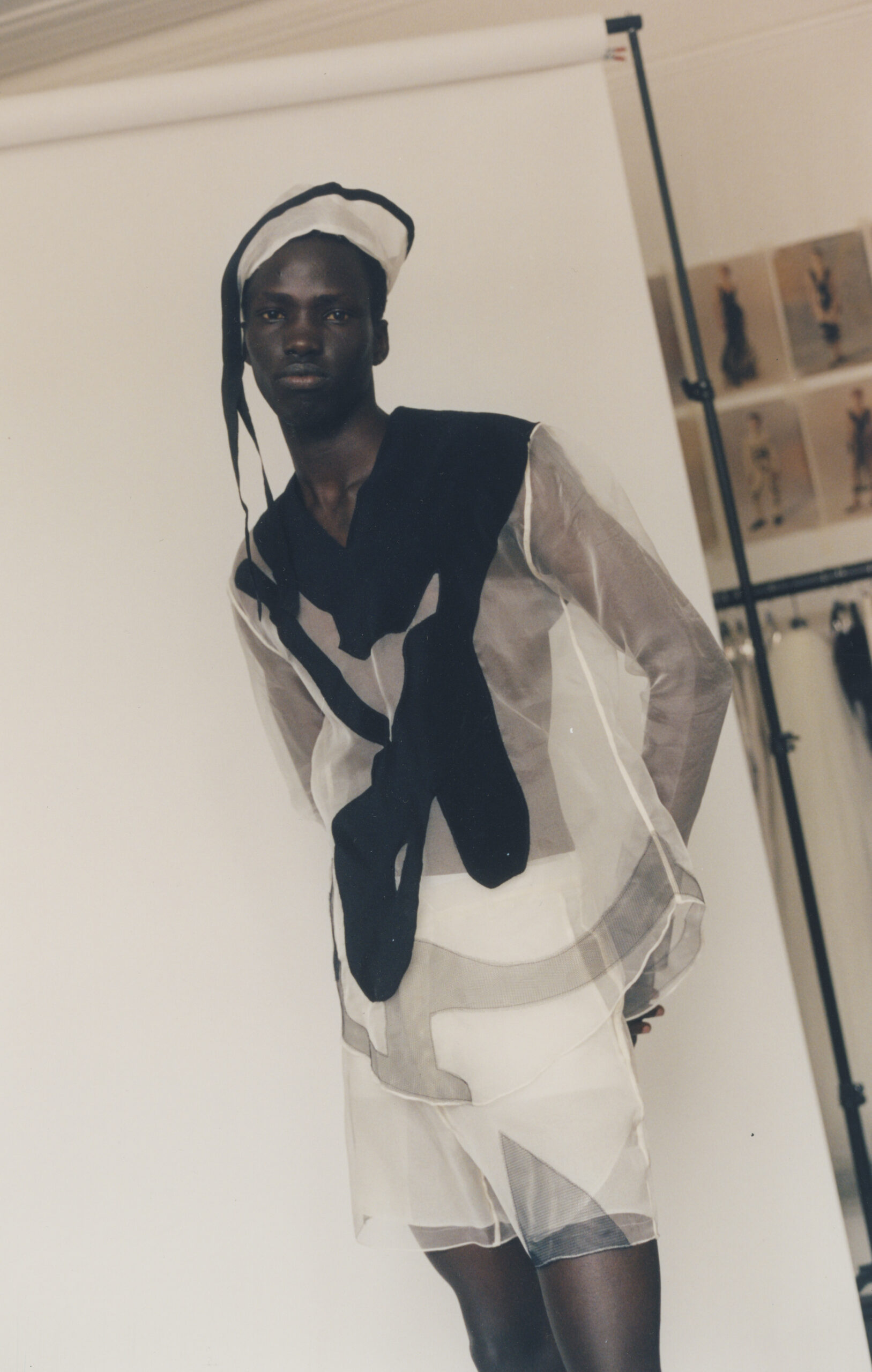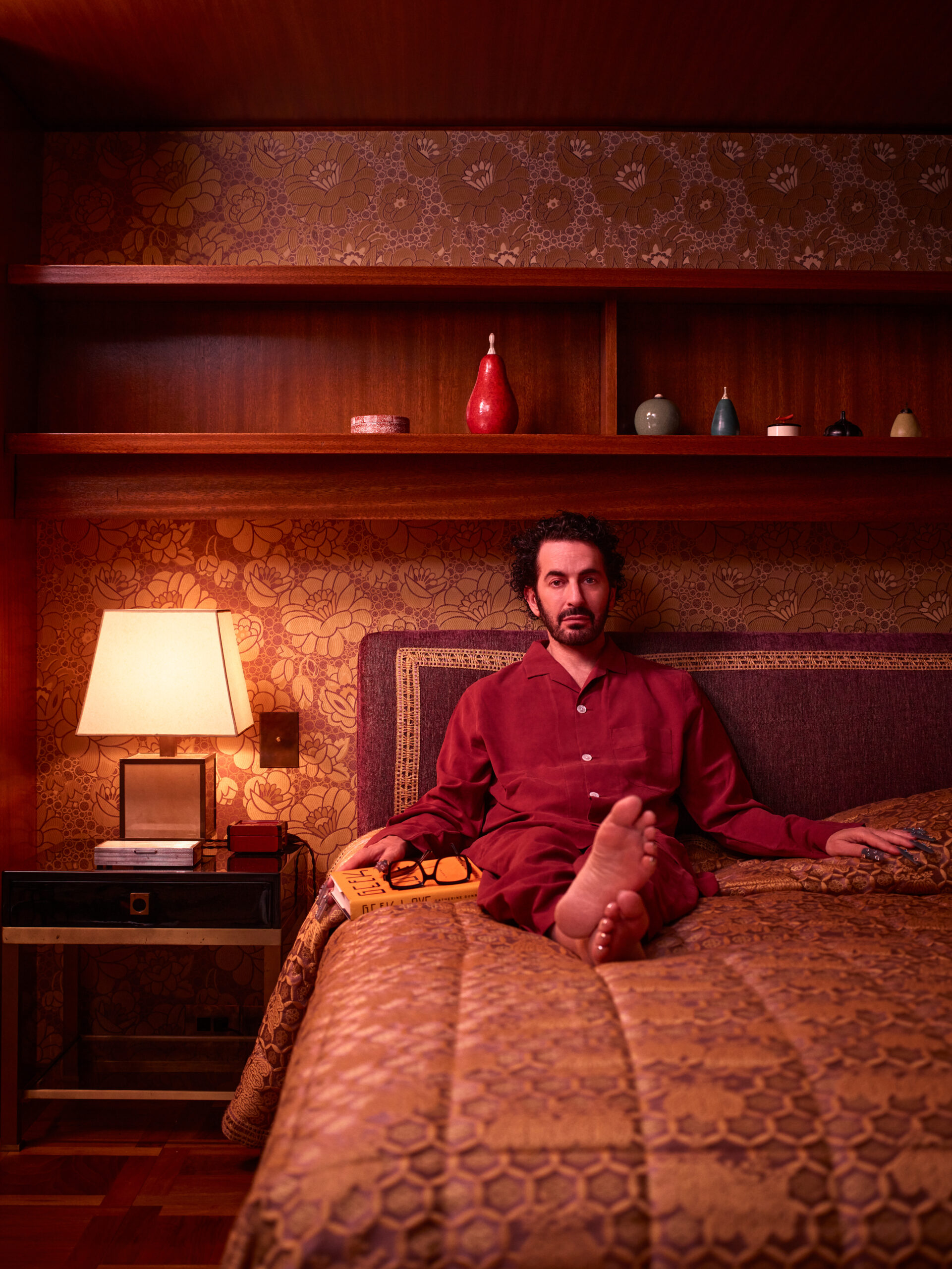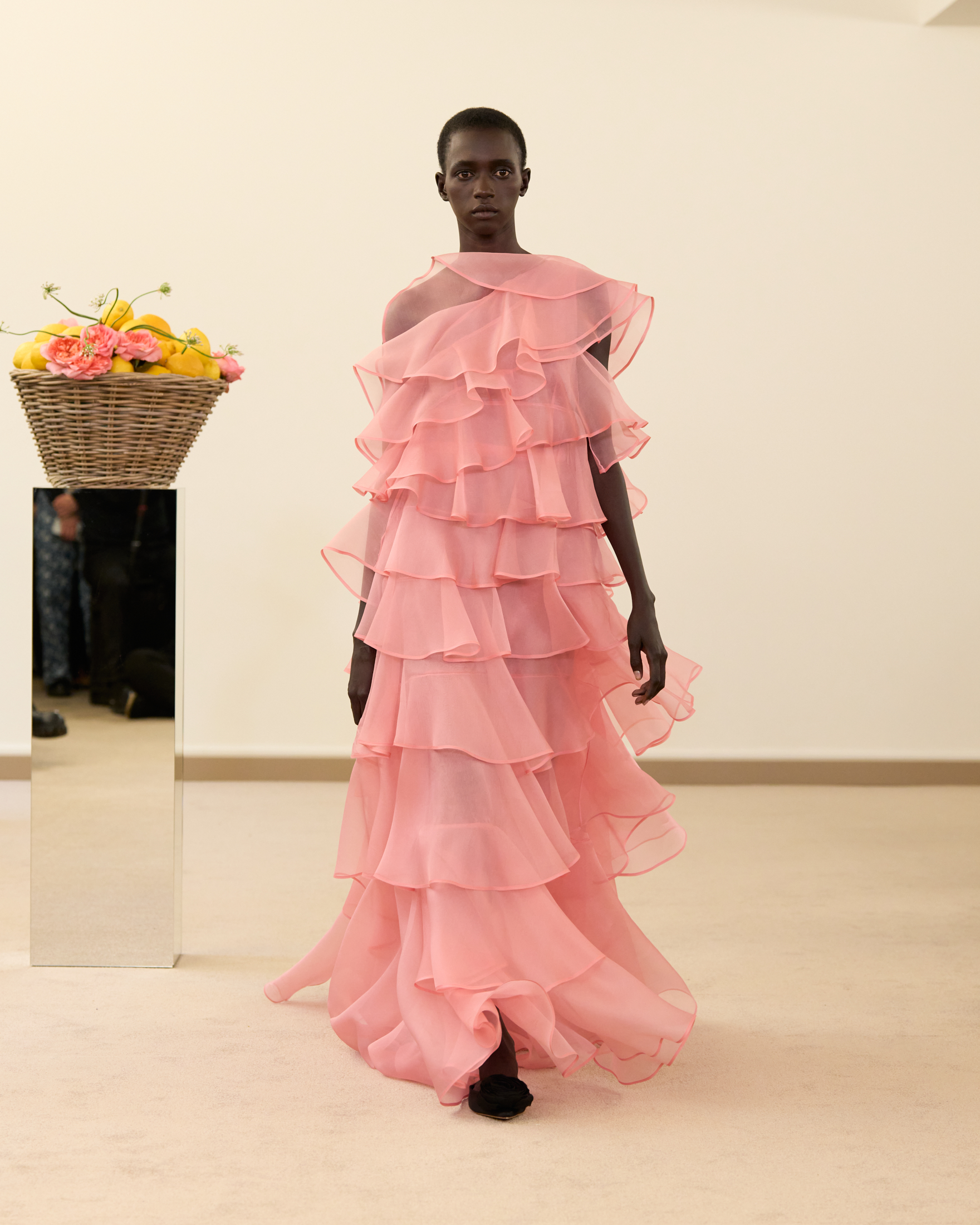
Giambattista Valli’s
Dutch-Master Dressing
Anders Christian Madsen reviews the Giambattista Valli Spring/Summer 2026 collection.
As the princess-y panniers and frou-frou have rolled down the runways this season, the mind has often traveled to the world of Giambattista Valli. Today, in the daylit porcelain-like salons of his headquarters on Avenue des Capucines with their pastel-painted ceilings, he finally got to have his say. Evolving the bucolic studies of his haute couture collection in July — inspired by Fragonard’s girl on The Swing and her peers — he presented a ready-to-wear proposal that would have made Marie-Antoinette swoon during her Rousseau-reading phase in the idealized hamlet she built at Versailles.
But despite its regal skirt volumes and girly opulence, Valli’s collection was not based on Marie-Antoinette. Instead, he traveled another century back in time, to 17th-century Holland when the Dutch Masters were fixated on everyday life with their depictions of rural and domestic scenes. What fascinated Valli about those paintings was the appreciation of the simple things in life: their still-lifes of fruits and flowers; their portrayals of the era’s middle-class people doing normal things, like talking to each other.
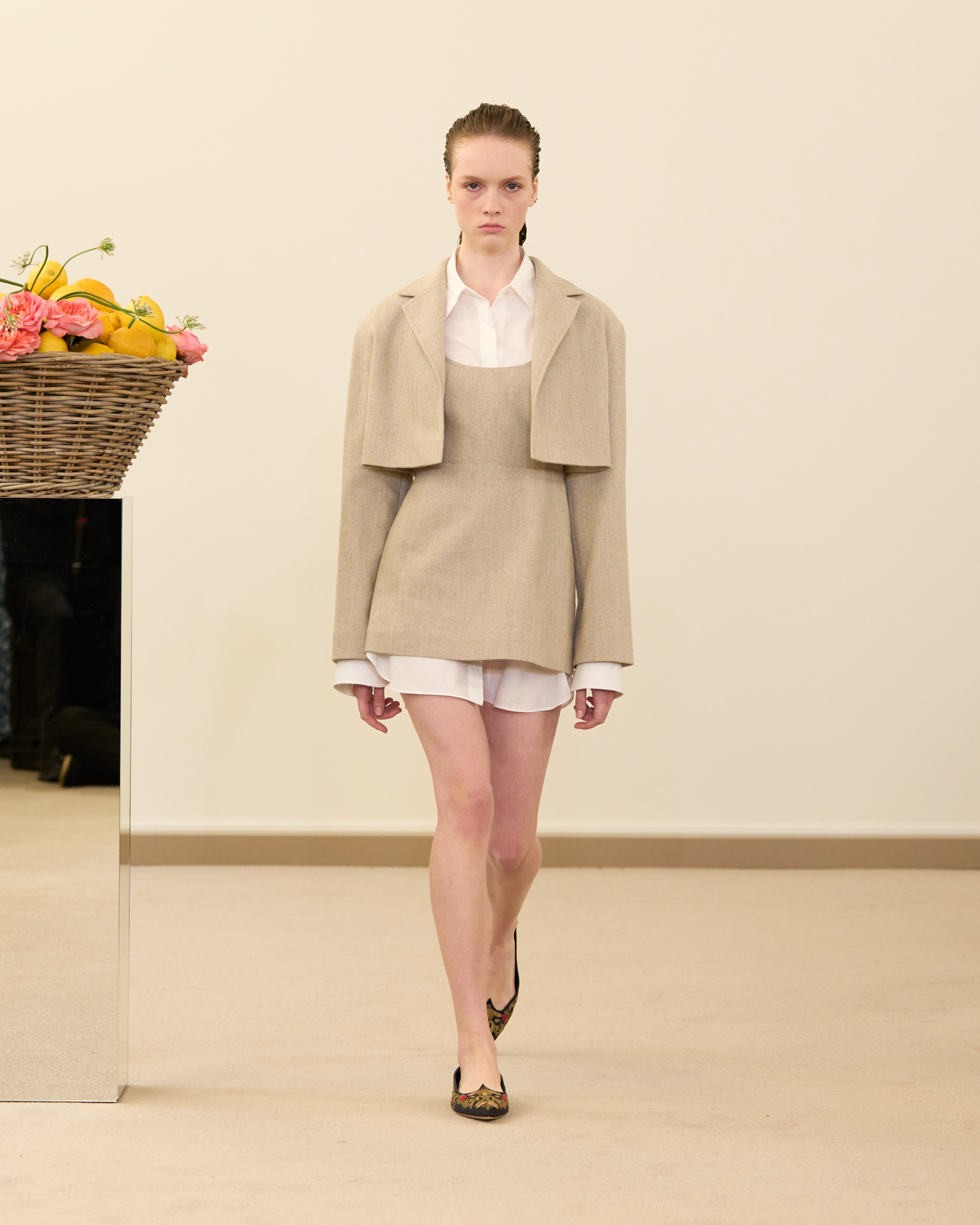
GIAMBATTISTA VALLI
“If we all started the morning having breakfast with a flower next to it, life would be so much more beautiful for everybody,” Valli said after the show. “It’s about intimate moments of conversations.” He channeled those ideas into a richly simple collection: little jackets and dresses constructed in neutral-colored painter’s canvas and adorned with Dutch still-lifes and surface decoration; stripped-down peasant blouses worn with full skirts and kerchiefs in painterly colors; and light-as-a-feather dresses prettified with ditsy florals and delicate ruffles. The very thematic approach — something Valli doesn’t often do this literally — added excellent storytelling to the collection and his world, which can easily handle a strong narrative within its defined aesthetic.
“There is this conversation between something that is very slick and something that is very blooming, because I love these opposites,” Valli said. At its heart, however, his collection wasn’t about romanticizing an unreal image of everyday life, the Marie-Antoinette way. Most of all, he was focused on the elements of exchange he had found in the Dutch Master paintings. “In this world, conversation is the most important thing,” he said. If these everyday clothes were for the elite few— as luxury like this tends to be — the messages he imbued them with were for a much broader audience.
